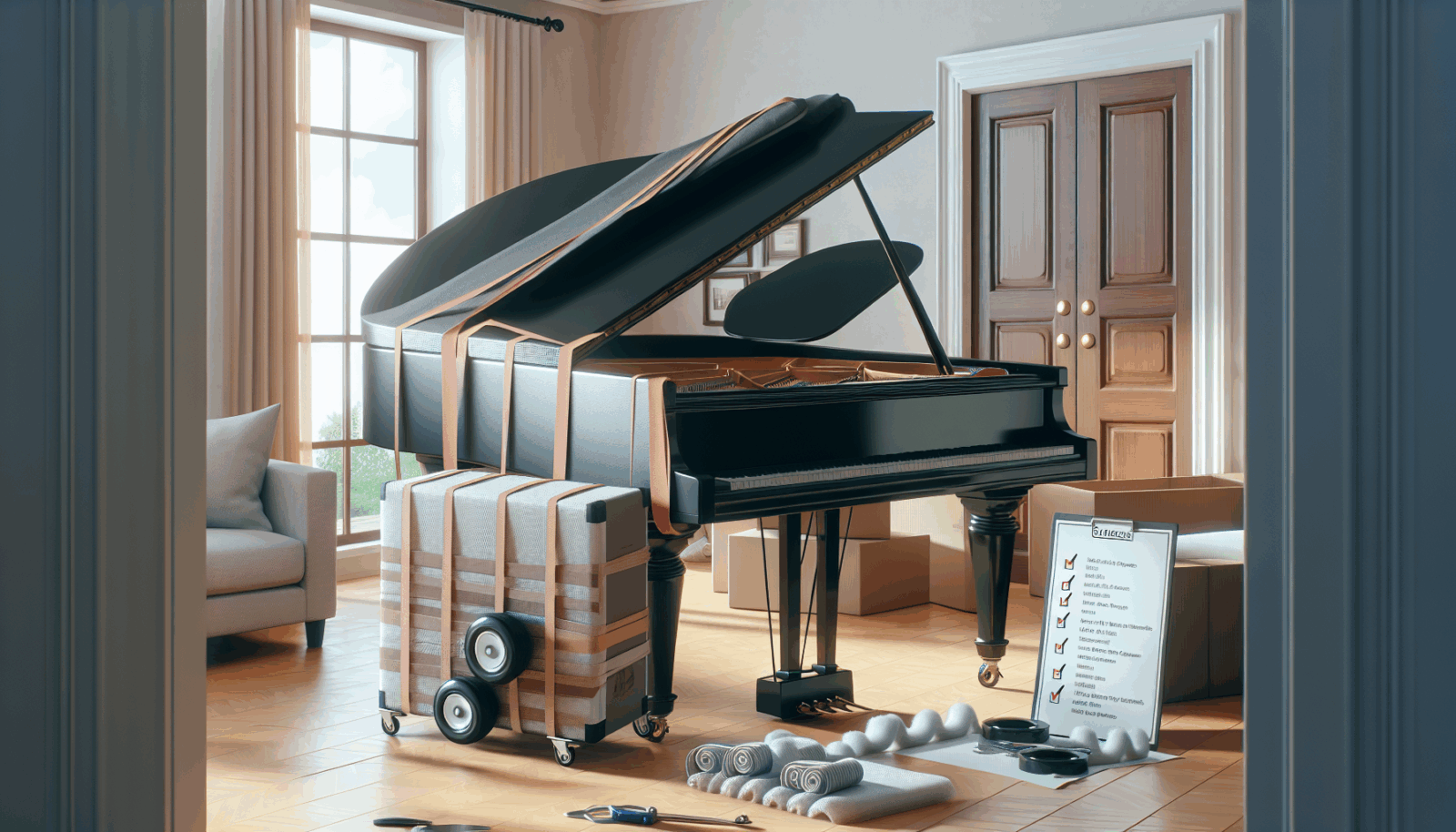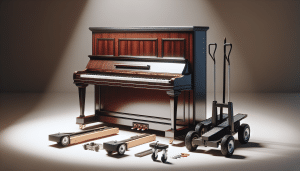Moving a piano is no easy feat. Fortunately, as Utah Piano Movers, we’re here to share our expertise with you. From understanding the complexity to offering peace of mind, our top 10 tips will guide you in moving your piano safely. Whether you’re a new homeowner or simply looking for the best advice, these insights will help ensure your cherished instrument arrives unharmed.
Contents
Understand Your Piano’s Anatomy
Understanding your piano’s anatomy is the first step toward a successful move. Pianos, whether grand or upright, are intricate and fragile. Their structure includes keys, pedals, strings, and a delicate inner frame. Knowing where these components are helps you handle the instrument with care. This basic anatomy knowledge prepares you to approach the move with the respect it deserves.
Besides intricate parts, pianos are also heavy. Their weight distribution is uneven, with more heft on one side. This makes moving a piano tricky without damaging it. Awareness of these characteristics is key to planning a safe transport.
Gather the Right Tools
When you’re ready to move your piano, having the right tools is essential. Having a well-stocked tool kit isn’t just convenient; it’s a prerequisite for any piano move. Dollies, moving straps, and furniture pads are your best friends in this endeavor. Dollies help take on the weight, while moving straps provide stability during the lift. Furniture pads or blankets protect the finish from scratches.
A piano board is another important tool in this toolkit. This wooden platform distributes the weight evenly, making it easier to maneuver your piano through tight spaces. Don’t forget ramps if stairs are involved; they make the otherwise daunting task of stair navigation manageable.
Measure Everything
Before moving begins, accurately measure your piano and the spaces it needs to pass through. You’d be surprised how often this crucial step is overlooked. Measure doorways, hallways, and staircases to ensure ample space.
Knowing these dimensions helps anticipate obstacles like sharp corners or narrow entries. This knowledge informs your strategy, ensuring that both the instrument and your home remain unscathed.
Plan Your Route
Planning your route might sound simple, but it’s critical. Consider all the angles, turns, and stairs involved in your piano’s journey. Map out the entire path from the starting point to the moving truck. Identify potential hazards, like tight corners or slippery surfaces, and plan alternatives if necessary.
You should also communicate with helpers about the route. Everyone should be on the same page to ensure smooth execution. A well-planned route reduces the chance of surprises, making for an efficient and safe move.
Enlist Professional Help
Let’s face it: some things are best left to professionals. While a DIY move can feel rewarding, hiring seasoned piano movers can save you stress and potential injury. Professionals have experience, expertise, and equipment to handle even the most challenging moves. They understand the potential quirks and nuances within different piano models, ensuring each is moved with utmost care.
Using our professional Services doesn’t just mean labor relief; it means peace of mind. Ensuring your piano is in expert hands allows you to focus on other aspects of your move.
Communication is Key
Communication might seem trivial, but it’s a crucial element of moving your piano. If you have a team helping, ensure everyone knows their role. Assign responsibilities like guiding the piano, lifting, and navigating if necessary.
Good communication minimizes misunderstandings and promotes teamwork, significantly lowering the risk of mishaps while lifting or maneuvering.
Secure Your Piano
To keep your piano safe during the move, it’s essential to secure every part of it. Begin by locking or removing the keyboard lid to prevent it from opening unexpectedly. Wrap your piano with furniture pads or blankets, securing them with tape or straps to protect the finish. This extra layer ensures that any bumps or scrapes won’t affect the appearance or function of your piano.
Additionally, remove detachable pieces if possible, like the legs of a Grand Piano. This minimizes damage and makes the instrument easier to handle.
Lift with Care
It’s time to lift, but how? We emphasize the importance of lifting with care. Proper lifting techniques reduce the risk of injury and damage. Always lift with your legs, keeping your back straight. This posture provides maximum strength and balance.
Never lift a piano by its legs. This practice risks both leg and body damage. Instead, distribute the weight evenly, using straps and having multiple points of contact.
5 Key Safety Tips
- Maintain Balance: Always keep the piano balanced while moving. Leaning can lead to undue stress and potential tipping.
- Monitor Surroundings: Stay aware of obstacles in your path. Remove any tripping hazards or debris in advance to ensure a smooth move.
- Handle With Gloves: Wearing gloves can improve grip and protect your hands from splinters or sharp edges.
- Use Ramps Wisely: If dealing with stairs, deploy ramps to ease the transition up or down. Ramps reduce risk and save labor.
- Regular Breaks: Take frequent breaks to avoid fatigue. Tired muscles can lead to mishaps, so keep your energy replenished.
Final Adjustments and Tuning
Once your piano is safely in its new home, adjustments are in order. After relocating, it’s common for a piano to go out of tune. The move, coupled with changes in humidity and temperature, may affect the mechanism. Schedule a tuning session to ensure it plays beautifully once more.
Check for any physical adjustments needed, such as reattaching removed parts. Ensuring everything is secure maintains the instrument’s longevity.
Our expert team at Utah Piano Movers is ready to assist with your next move. By phone at 801-396-7323 or Request a Free Quote, let’s ensure your piano reaches its new home safely.




